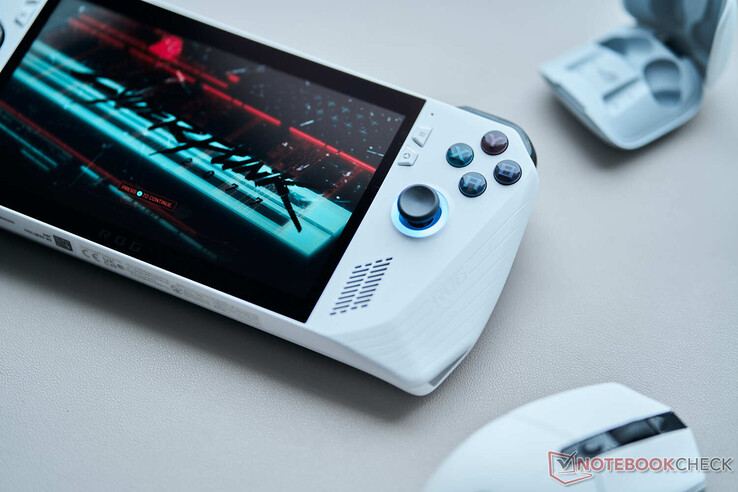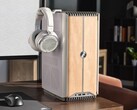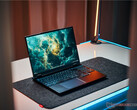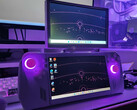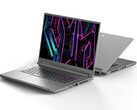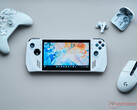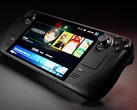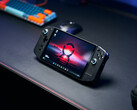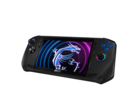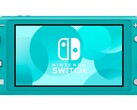Asus ROG Ally 2 confirmed - 4 issues the next-gen handheld PC needs to address
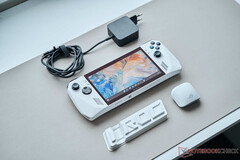
1. An improved screen with narrower bezels
Compared to the likes of the Lenovo Legion Go (curr. $699.99 from Lenovo US) and the Valve Steam Deck, the Asus ROG Ally has a very conventional screen, with a resolution of 1920×1080 — a wider aspect ratio than both the Legion Go and Steam Deck's 16:10. While this is generally an acceptable screen resolution and aspect ratio for most gaming applications, there are a few reasons why the Legion Go's 16:10, 2560×1600 screen make more sense.
Firstly, the 1600p resolution allows gamers to play games at 800p without fancy tricks, like AMD's FSR, improving frame rates and resulting in a sharper image with pure integer scaling than the current-gen ROG Ally's 540p result using the same method. A higher screen resolution would also mean better text legibility and more scaling options in Windows, making it easier to configure options and install games. While it's at it, Asus should really slim down the bezels on the Ally to make it look and feel slightly more modern — just like Valve did with the Steam Deck OLED.
2. Asus needs to (and likely will) fix the unreliable SD card slot
The SD card slot of the current-generation Asus ROG Ally has been one of the most significant problems since the handheld PC's launch — it seems as though the position of the SD card slot and inadequate heat shielding have led to SD cards becoming corrupted or even damaged. If ASUS hopes for the second iteration of the ROG Ally to be anywhere near as popular as the original, it needs to fix the SD card slot so that users of the handheld can use expanded storage without having to worry about losing data and valuable SD cards.
Fortunately, Asus knows about the SD card issue and has been replacing SD card slot hardware under warranty along with damaged SD cards. Asus has already confirmed that the ROG Ally 2024 will be shown off at Computex 2024 and that it will feature “incremental hardware improvements,” meaning a relocated or fixed SD card slot is likely.
ASUS Will Refund Your SD Cards & Broken SD Card Unit
byu/RubberDucky451 inROGAlly
3. A second USB Type-C port would be nice
One of the joys of PC gaming is expanding a device's capability with extra peripherals. While the USB Type-C port on the Asus ROG Ally allows for similar expansion and compatibility with a wide variety of accessories, having only one port makes it challenging to take advantage of the flexibility while the handheld is plugged in. Further, it limits users to BIOS/UEFI updates via Windows and Asus software instead of being able to flash it onto a USB flash drive. A single USB port also makes installing something like Linux a hassle.
Users of the Asus ROG Ally, and especially those who have tried other handheld PCs with dual USB Type-C ports, have also commented on how much of an improvement it is to have more than one charging port location. Depending on how you're positioned while playing plugged-in — sitting on a chair or couch versus lying in bed, for example — using a bottom port might be more convenient.
4. Better ergonomics — hall-effect joysticks, touchpads, and different colour options
Despite occasional complaints about the controls feeling somewhat cramped, the Asus ROG Ally (curr. $599.99 at Best Buy) more or less nailed the ergonomics for the most part. Where Asus could improve with very little effort, however, is swapping out the regular analogue joysticks on the ROG Ally with hall-effect joysticks for the ROG Ally 2 — this would make the sticks more customisable and longer-lasting. While Asus is at it, it could make the controller-style bulges slightly more substantial to make the large device easier to hold onto for more people. A touchpad or two for strategy games would also be a welcome addition to make the Ally 2 more versatile, as would a built-in kickstand for table-top gaming sessions or movie-watching.
As anyone who's had a white Xbox controller knows, white is a terrible choice for a device that is meant to be held during intense, sometimes sweaty, gaming sessions — this is an even more prominent issue for a portable device. For the second iteration of the Ally, Asus should release a black version to make dirt, fingerprints, and stains slightly less prominent.
Rog ally's "whiteness"
byu/Educational_Star_762 inROGAlly




